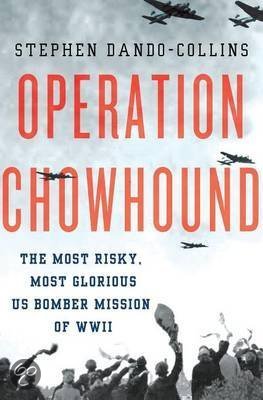Negotiating a truce
General Eisenhower had not wasted any time after his meeting with Prince Bernhard on April 15. On 17 April Air Commondore Adrew James Wrey Geddes is called to Sheaf headquarters in Reims. Geddes meets Eisenhower and he tells him:
" I want to see you again with a plan to feed 3500.000 Dutch by air, drop zones, corridors, the lot. You have my full support. Bert Harris has been told to give you two Bomb Groups and sufficient pathfinders; the 8th Air force has three Wings at your disposal. We need a prepared agreement for Jerry, no negotiations, just instructions. Do it Geddes, do it quickly." (Onderwater 1995 page. 31)
In the meanwhile the BBC and Radio Orange broadcasted this announcement from SHEAF on 24 April.
"The power of your government is now limited to a small number of resistance pockets in Germany.[...]The Allied Supreme Commander has given orders to drop food by parachute in order to relief the burden of the Dutch in the final stage of battle. A large number of aircraft will engage in this mission by day and night to deliver the food. These aircrafts will not be used as means of war but only as the transportation of food for the starving population." (This text is a translation from the Dutch version of the announcement as it appeared in Onderwater 1985 page 23.)
The Germans considered Sheaf's communiqué as propaganda act. But the broadcast didn't only serve as propaganda. For Seyss-Inquart it was the signal where he had waited for. It mend that the Allied Forces were prepared to act on his proposition and discuss a truce. The truce that was necessary to deliver food. Seyss-Inquart had a meeting with ir. Louwes, the man responsible for the food distribution in occupied Holland. They talked about how the food drops had to take place and Louwes suggested to have the Allied drop the food on the airfields in Western Holland. (L. De Jong part 10B page 1289)
The Germans gave the Committee of Confidence a telegram for Sheaf, which they had to send to the Dutch government in London.
"In order to provide the Dutch with food, Seyss-Inquart, with the permission of the Oberbefehlshaber der Nierderlande agreed to let food be dropped between o-eight hundred and nineteen-hundred hours, starting from Friday 27th April. The food could be dropped on the racetrack Duindigt near The Hague, the airfield Ypenburg also near The Hague, the airfield Valkenburg near Leiden and the airfield Waalhaven near Rotterdam." (Translated from: L. De Jong; page 1289)
Sheaf also sent a telegram to Seyss-Inquart that day. The Allied commander Eisenhower urged the German Reichscommisar to set a date for negotiations quickly and with that the meeting in Achterveld on 28th April was set.
 Author: Hans Onderwater This book by Hans Onderwater is the standard work about the food drop missions over Occupied Holland with a bundle of information, photos and first hand accounts of the hunger winter and the food drop missions.
Author: Hans Onderwater This book by Hans Onderwater is the standard work about the food drop missions over Occupied Holland with a bundle of information, photos and first hand accounts of the hunger winter and the food drop missions.